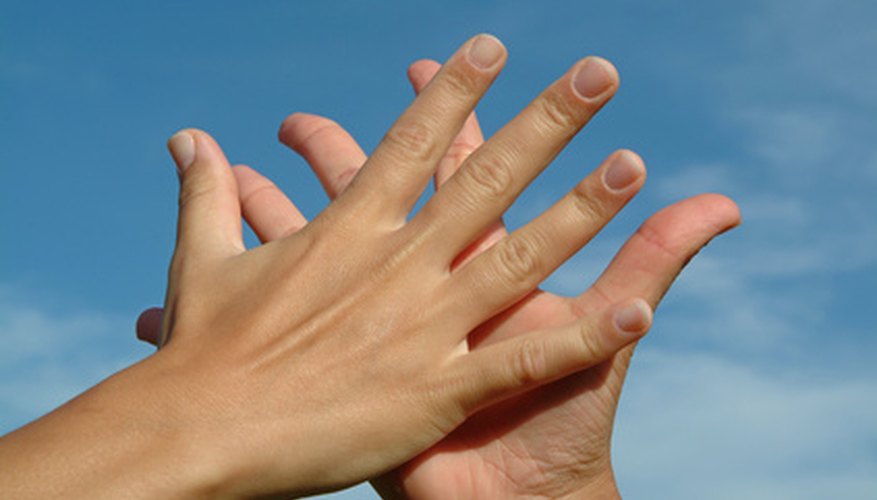The condition of your fingernails could have a lot to do with your overall health. A number of health problems, ranging from vitamin deficiency to psoriasis, could show up in the appearance of your nails. If you suffer from rippled or pitted thumbnails, it might be time to start looking at your lifestyle, or see your doctor. Learning the causes and treatments for rippled thumbnails could help you feel a lot better in the long run.
Significance
Imperfections in your thumb and fingernails say a lot about your condition. A bluish tint to the nails could signal lung problems, while a pale nail bed can help identify anaemia. Conditions that affect the blood flow to the nails or suppress the immune system may cause uneven nail growth. Your nails can help signal a problem even when other symptoms are minor. Paying attention to rippling or pitting of the thumbnails may allow you to catch problems early and get effective treatment.
- Imperfections in your thumb and fingernails say a lot about your condition.
- A bluish tint to the nails could signal lung problems, while a pale nail bed can help identify anaemia.
Causes
One common cause of rippled nails is psoriatic or inflammatory arthritis. This disease often affects just one or two digits, and usually includes joint pain. Psoriatic arthritis can affect the growth of nails, causing an irregular surface, and may eventually deform the digit itself. Rippled nails may also indicate a fungal infection, an iron deficiency, or a lack of calcium in the diet.
- One common cause of rippled nails is psoriatic or inflammatory arthritis.
- Psoriatic arthritis can affect the growth of nails, causing an irregular surface, and may eventually deform the digit itself.
Types
Rippled nails may take on many different forms. If the rippling is accompanied by thin, brittle nails with a tendency to be concave in shape, the problem is likely to be iron deficiency. Nails with a "tortoise shell" appearance may be caused by calcium deficiency or by repetitive motion injuries inside the thumbs or fingers. Damaged cuticles can cause lengthwise ridges in the nail. A past illness may create ridges that run widthways, due to slow growth during the period when you were sick.
- Rippled nails may take on many different forms.
- Nails with a "tortoise shell" appearance may be caused by calcium deficiency or by repetitive motion injuries inside the thumbs or fingers.
Considerations
It's difficult to diagnose the causes of rippled thumbnails on your own. Seeing a doctor is an important step if you want to return your nails to normal. A medical professional has the training and background to determine whether your unusual nail growth is simply the result of a cuticle or nail bed injury, or a sign of bigger problems. Prompt treatment is important for many conditions that affect the nails.
- It's difficult to diagnose the causes of rippled thumbnails on your own.
- Seeing a doctor is an important step if you want to return your nails to normal.
Prevention/Solution
Taking proper care of your nails and keeping an eye on your health can decrease your chance of finger and thumbnail deformities. Keep your hands moisturised and your nails clean. Avoid biting the nails or picking at them, which can cause problems in the cuticle and nail bed. File your nails gently and in the same direction. Consume a balanced diet, along with a multivitamin, and talk to your doctor right away if you notice anything unusual.
- Taking proper care of your nails and keeping an eye on your health can decrease your chance of finger and thumbnail deformities.
